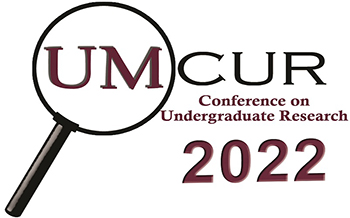Project Type
Presentation
Faculty Mentor’s Full Name
Rachel Severson
Faculty Mentor’s Department
Department of Psychology
Abstract / Artist's Statement
Anthropomorphism is the tendency to attribute human characteristics (i.e. emotions, intentions) to nonhuman animals, technologies, and nature. This disposition varies by individual, but there may be factors that contribute to one’s tendencies. The current study investigates cultural contributions to the development of individual anthropomorphism by assessing the anthropomorphic tendencies of children and adults from China and Canada. The Chinese sample included children (4-6 years; N=299) and adults (16-28 years; N=294); the Canadian sample included children (4-6 years; N=103) and adults (17-52 years; N=158). All participants were administered the Individual Differences in Anthropomorphism Questionnaire - Child Form (IDAQ-CF), a 12-item measure assessing individual differences in the tendency to anthropomorphize nonhuman entities. The scale ranges from no attribution to full attribution - children responded on a 4-point scale and adults on a 10-point scale. To test for cultural differences, I ran independent-samples T-tests for both the child and adult samples, and repeated-measures ANOVA, with culture and age group as the between-subjects factors and IDAQ-CF subscales (animals and technology/nature) as the within-subjects factor. Children from China more readily anthropomorphized technology, nature, and animals than children from Canada. Adults from China more readily anthropomorphized technology and nature than those from Canada, but the adult samples did not differ on the animal subscale. The difference on the technology/nature subscale present in the child sample becomes more extreme in adulthood, but the difference in the animal subscale does not persist. It may be that entities that do not provide many cues regarding internal state are more sensitive to cultural conceptions than entities that provide many cues. The study of anthropomorphism has broad implications for how people understand and treat both human and nonhuman others, and it reflects a diversity of worldviews about who or what has emotions, intentions, and conscious minds.
Category
Humanities
Learning to see human: universal aspects and cultural variations in the development of anthropomorphism
UC 330
Anthropomorphism is the tendency to attribute human characteristics (i.e. emotions, intentions) to nonhuman animals, technologies, and nature. This disposition varies by individual, but there may be factors that contribute to one’s tendencies. The current study investigates cultural contributions to the development of individual anthropomorphism by assessing the anthropomorphic tendencies of children and adults from China and Canada. The Chinese sample included children (4-6 years; N=299) and adults (16-28 years; N=294); the Canadian sample included children (4-6 years; N=103) and adults (17-52 years; N=158). All participants were administered the Individual Differences in Anthropomorphism Questionnaire - Child Form (IDAQ-CF), a 12-item measure assessing individual differences in the tendency to anthropomorphize nonhuman entities. The scale ranges from no attribution to full attribution - children responded on a 4-point scale and adults on a 10-point scale. To test for cultural differences, I ran independent-samples T-tests for both the child and adult samples, and repeated-measures ANOVA, with culture and age group as the between-subjects factors and IDAQ-CF subscales (animals and technology/nature) as the within-subjects factor. Children from China more readily anthropomorphized technology, nature, and animals than children from Canada. Adults from China more readily anthropomorphized technology and nature than those from Canada, but the adult samples did not differ on the animal subscale. The difference on the technology/nature subscale present in the child sample becomes more extreme in adulthood, but the difference in the animal subscale does not persist. It may be that entities that do not provide many cues regarding internal state are more sensitive to cultural conceptions than entities that provide many cues. The study of anthropomorphism has broad implications for how people understand and treat both human and nonhuman others, and it reflects a diversity of worldviews about who or what has emotions, intentions, and conscious minds.
